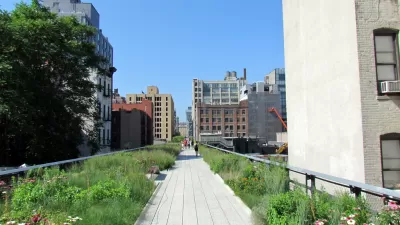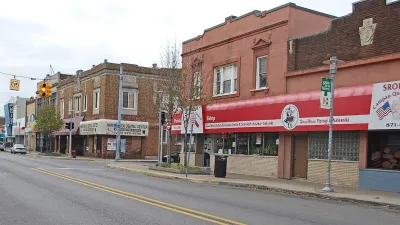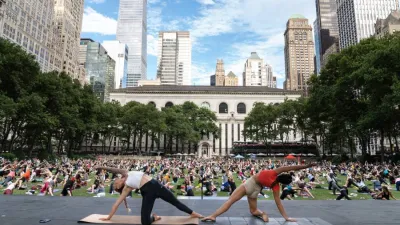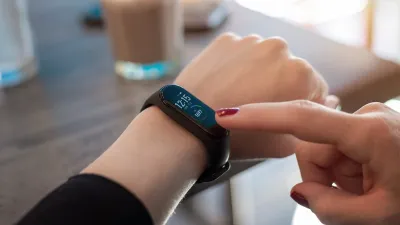New research shows that people are likely to walk more in places that are both walkable and green.

A new study from North Carolina State University reveals that people who spend time in walkable, green neighborhoods engage in more physical exercise. As reported by Megan Skrip for NC State University News, “The analysis, led by former NC State postdoctoral scholar Oriol Marquet, used wearable sensors and satellite data to link people’s activity levels with the walkability and greenness of where they spent their time.” While unsurprising, these findings indicate that coordinated improvements to pedestrian infrastructure and green spaces can improve public health. According to study co-author Aaron Hipp, “It’s unfortunately rare to live or work in a neighborhood that has the walking infrastructure like sidewalks, destinations like a spot for lunch, and are green and shaded. This work again supports that the best environments have all three.”
“The new findings suggest that having opportunities to walk between home, work and other destinations is likely to boost physical activity, as long as those areas are also very green.” The study’s authors recommend “interventions to plant vegetation should focus on doing so in areas where walkability is high to maximize opportunities for physical activity.”
Other research similarly suggests that, while hard infrastructure like sidewalks are an important factor in walkability, other elements—such as air quality, shade, and access to essential services—all contribute to a neighborhood’s walkability and the health of its residents.
FULL STORY: Study: People Are Most Physically Active When Their Environments are Both Highly Walkable and Very Green

Study: Maui’s Plan to Convert Vacation Rentals to Long-Term Housing Could Cause Nearly $1 Billion Economic Loss
The plan would reduce visitor accommodation by 25,% resulting in 1,900 jobs lost.

Alabama: Trump Terminates Settlements for Black Communities Harmed By Raw Sewage
Trump deemed the landmark civil rights agreement “illegal DEI and environmental justice policy.”

Why Should We Subsidize Public Transportation?
Many public transit agencies face financial stress due to rising costs, declining fare revenue, and declining subsidies. Transit advocates must provide a strong business case for increasing public transit funding.

Paris Bike Boom Leads to Steep Drop in Air Pollution
The French city’s air quality has improved dramatically in the past 20 years, coinciding with a growth in cycling.

Why Housing Costs More to Build in California Than in Texas
Hard costs like labor and materials combined with ‘soft’ costs such as permitting make building in the San Francisco Bay Area almost three times as costly as in Texas cities.

San Diego County Sees a Rise in Urban Coyotes
San Diego County experiences a rise in urban coyotes, as sightings become prevalent throughout its urban neighbourhoods and surrounding areas.
Urban Design for Planners 1: Software Tools
This six-course series explores essential urban design concepts using open source software and equips planners with the tools they need to participate fully in the urban design process.
Planning for Universal Design
Learn the tools for implementing Universal Design in planning regulations.
Smith Gee Studio
Alamo Area Metropolitan Planning Organization
City of Santa Clarita
Institute for Housing and Urban Development Studies (IHS)
City of Grandview
Harvard GSD Executive Education
Toledo-Lucas County Plan Commissions
Salt Lake City
NYU Wagner Graduate School of Public Service





























